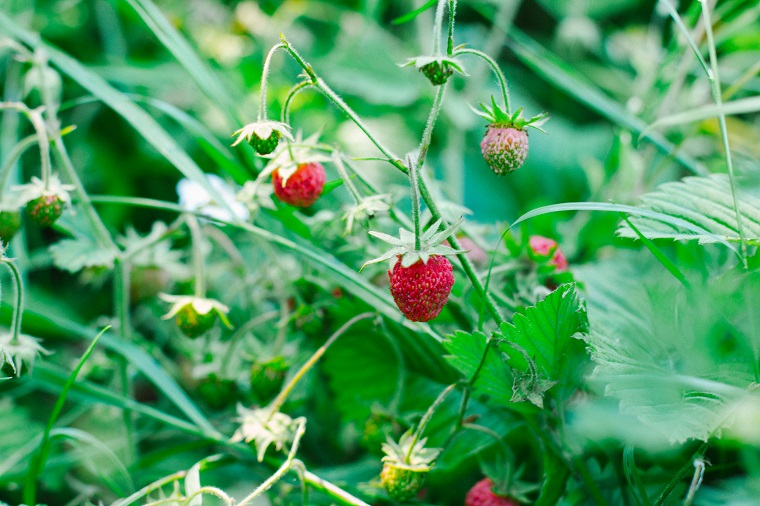Are Strawberries too Tasty to Evolve?
By Emma Plater
19 February 2019

Wild strawberry plants that have been modified to contain extra genetic material don’t survive as well as their unmodified counterparts, according to researchers in the Department of Integrative Biology.
Prof. Brian Husband and recent PhD graduate Wendy Van Drunen experimentally induced a condition called “polyploidy” in wild strawberry plants, Fragaria vesca. “Ploidy” refers to how many sets of genes are in each cell of an organism. Many organisms are diploids – that is, they have two sets of genes, one set from each parent. In polyploidy, an organism has more than two sets of chromosomes, which, in the case plants, can lead to greater growth.
“Polyploids have more genetic material,” says Van Drunen. “They should be bigger and grow better than diploids.”
In the case of wild strawberry, however, she and Husband found that polyploids failed to grow or reproduce as well as their unmodified counterparts, in either a greenhouse setting or in field plots.
In nature, polyploidy is created by a mutation that leads to cells having multiple sets of genes. But, as a consequence, these new strains must reproduce asexually; in other words, they have to “clone” themselves, because they are no longer genetically compatible with the other strawberry plants surrounding them. Polyploid plants usually reproduce by sprouting aboveground “runners” called stolons, which produce new, genetically identical “plantlets”.
“It’s all alone,” explains Van Drunen. “It needs to reproduce somehow.”
The team found that their experimentally-induced polyploids produced fewer stolons and plantlets compared to regular wild strawberry plants. This failure to thrive may explain why polyploids of this wild strawberry species don’t exist in nature – they simply aren’t vigorous enough to become established.
It was an unexpected result, given that there are numerous other plant species where polyploids not only exist but thrive. In fact, up to 35% of all 400,000 flowering plant species have polyploidy, suggesting that it may provide an evolutionary advantage.
Successful polyploids may be examples of “hopeful monsters”, major genetic mutations that thrive “if they’re lucky enough or there are enough of them,” explains Van Drunen. “Large scale genetic shakeup is usually bad but sometimes it can be good.”
This species of wild strawberry is a precursor to commercial strawberries, which are themselves polyploid and can reproduce through either flowers or stolons. Commercial strawberries that produce fewer stolons (like their wild polyploid cousins) are likely investing their energy into fruit production instead.
Which means that in the case of strawberries, nature may already have it just right.
This work was funded by the Natural Science and Engineering Research Council of Canada.
Read the full article in the American Journal of Botany.
Read about other CBS Research Highlights.